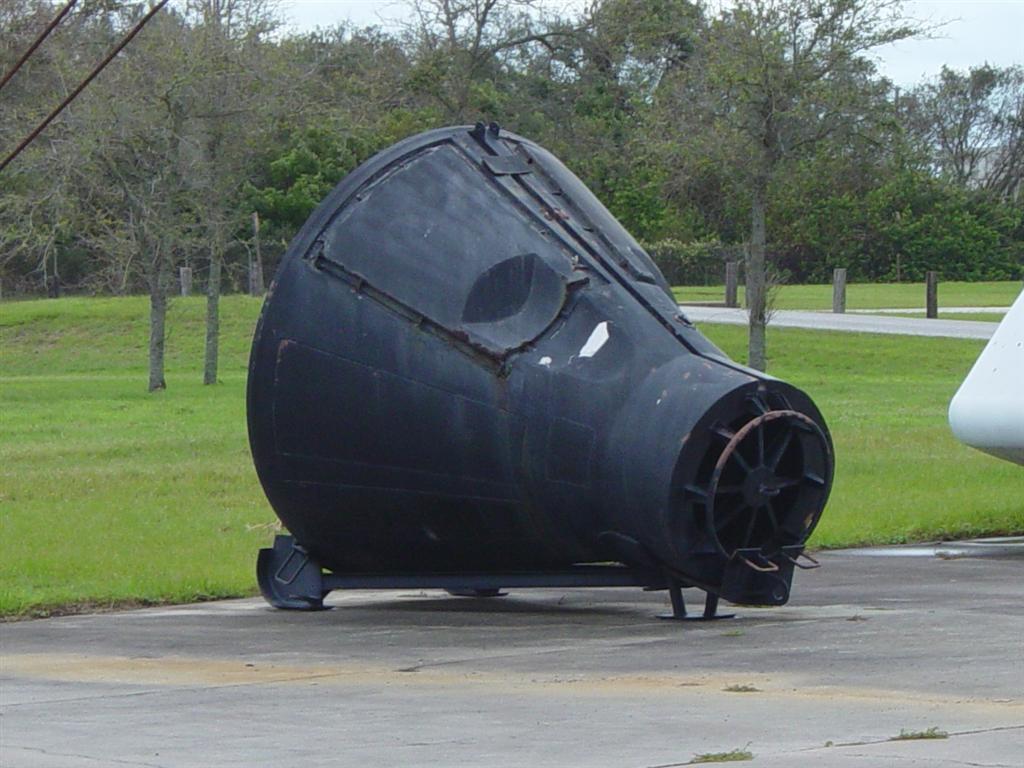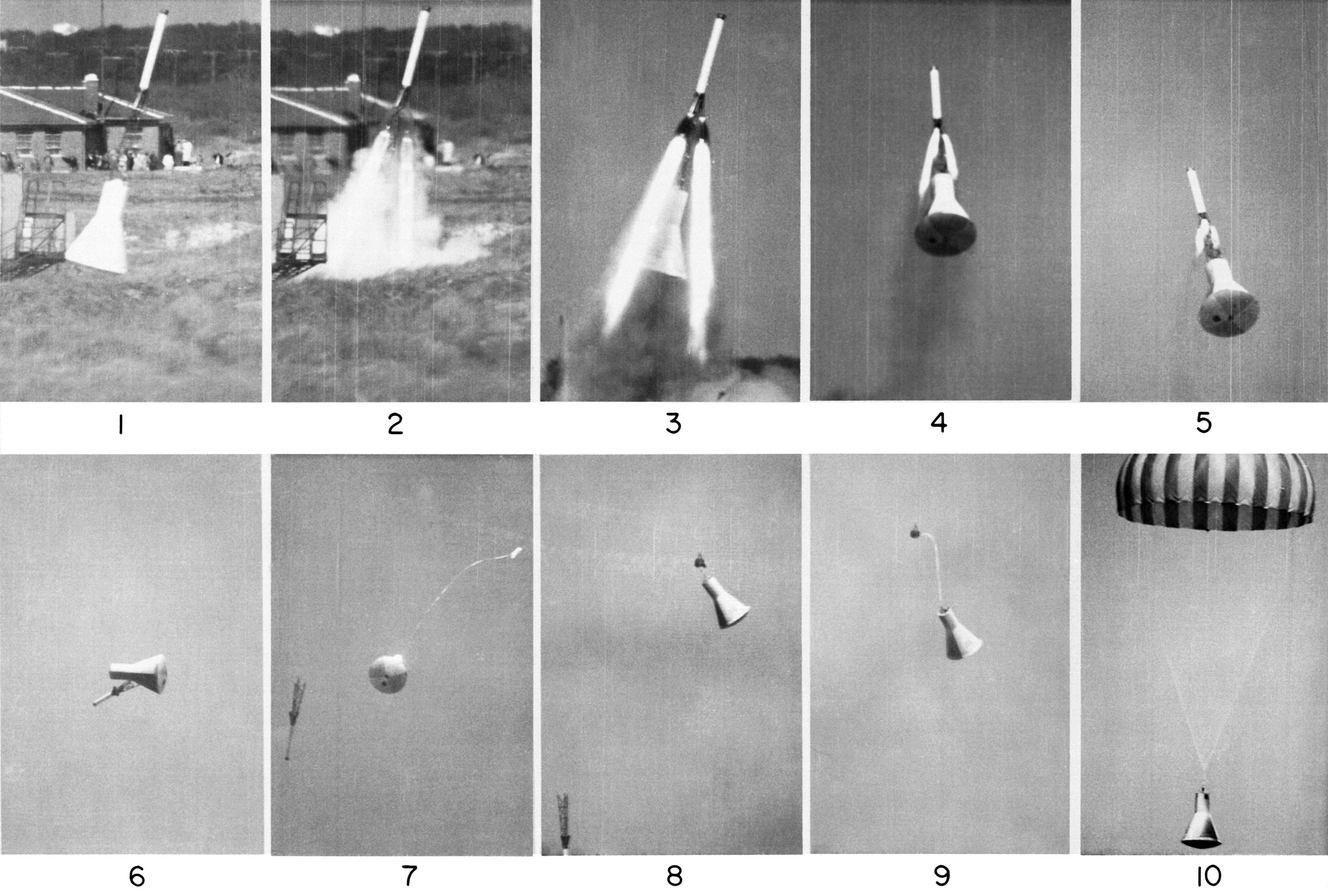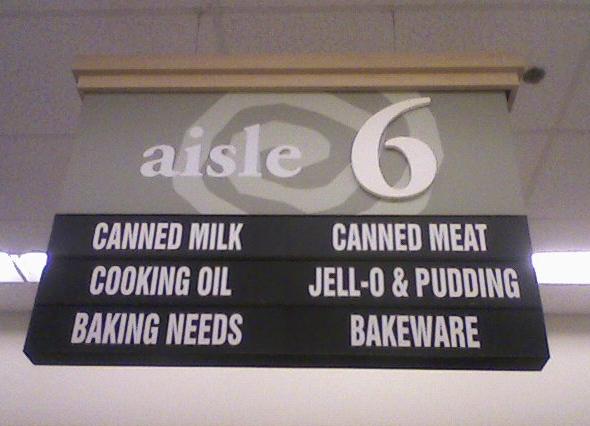|
Boilerplate (spaceflight)
A boilerplate spacecraft, also known as a mass simulator, is a nonfunctional craft or payload that is used to test various configurations and basic size, load, and handling characteristics of rocket launch vehicles. It is far less expensive to build multiple, full-scale, non-functional boilerplate spacecraft than it is to develop the full system (design, test, redesign, and launch). In this way, boilerplate spacecraft allow components and aspects of cutting-edge aerospace projects to be tested while detailed contracts for the final project are being negotiated. These tests may be used to develop procedures for mating a spacecraft to its launch vehicle, emergency access and egress, maintenance support activities, and various transportation processes. Boilerplate spacecraft are most commonly used to test crewed spacecraft; for example, in the early 1960s, NASA performed many tests using boilerplate Apollo spacecraft atop Saturn I rockets, and Mercury spacecraft atop Atlas rocke ... [...More Info...] [...Related Items...] OR: [Wikipedia] [Google] [Baidu] |
McDonnell Aircraft
The McDonnell Aircraft Corporation was an American aerospace manufacturer based in St. Louis, Missouri. The company was founded on July 6, 1939, by James Smith McDonnell, and was best known for its military fighters, including the F-4 Phantom II, and crewed spacecraft including the Mercury capsule and Gemini capsule. McDonnell Aircraft later merged with the Douglas Aircraft Company to form McDonnell Douglas in 1967. History James McDonnell founded J.S. McDonnell & Associates in Milwaukee, Wisconsin, in 1928 to produce a small aircraft for family use.J.S. McDonnell & Associates, Early years: 1927-1938 (part 1) , Boeing.com. The economic depression from 1929 ruined his plans and the company collapsed. He went to work for [...More Info...] [...Related Items...] OR: [Wikipedia] [Google] [Baidu] |
Beach Abort
The Beach Abort was an unmanned test in NASA's Project Mercury, of the Mercury spacecraft Launch Escape System. Objectives of the test were a performance evaluation of the escape system, the parachute and landing system, and recovery operations in an off-the-pad abort situation. The test took place at NASA's Wallops Island, Virginia, test facility on May 9, 1960. In the test, the Mercury spacecraft and its Launch Escape System were fired from ground level. The flight lasted a total of 1 minute, 16 seconds. The spacecraft reached an apogee of and splashed down in the ocean with a range of .Top speed was a velocity of . A Marine Corps helicopter recovered the spacecraft 17 minutes after launch. The test was considered a success, although there was insufficient separation distance when the tower jettisoned. Mercury Spacecraft #1, the first spacecraft off McDonnell's production line, was used in this test. Total payload weight was . Mercury Spacecraft #1 is displayed at the New York ... [...More Info...] [...Related Items...] OR: [Wikipedia] [Google] [Baidu] |
Genericize
A generic trademark, also known as a genericized trademark or proprietary eponym, is a trademark or brand name that, because of its popularity or significance, has become the generic term for, or synonymous with, a general class of Good (economics and accounting), products or service (economics), services, usually against the intentions of the trademark's owner. A trademark is said to become ''genericized''—or, informally, to have suffered ''genericide''—when it begins as a distinctive product identifier but changes in meaning to become generic. This typically happens when the products or services which the trademark is associated with have acquired substantial market dominance strategies, market dominance or mind share, such that the primary meaning of the genericized trademark becomes the product or service itself rather than an indication of source for the product or service. A trademark thus popularised has its legal protection at risk in some countries such as the Unit ... [...More Info...] [...Related Items...] OR: [Wikipedia] [Google] [Baidu] |
Little Joe 1A
Little Joe 1A (LJ-1A) was an unmanned rocket launched as part of NASA's Mercury program on November 4, 1959. This flight, a repeat of the Little Joe 1 (LJ-1) launch, was to test a launch abort under high aerodynamic load conditions. After lift-off, the pressure sensing system was to indicate when the correct abort dynamic pressure was reached. This should have happened about thirty seconds after launch. A signal was sent to the explosive bolts to separate the spacecraft from the launch vehicle A launch vehicle or carrier rocket is a rocket designed to carry a payload (spacecraft or satellites) from the Earth's surface to outer space. Most launch vehicles operate from a launch pad, launch pads, supported by a missile launch contro .... Up to this point, everything was going as planned. The impulse was also intended to ignite the escape motor. The motor was ignited, but it took a number of seconds to build up thrust, and thus the abort maneuver was not accomplished at the de ... [...More Info...] [...Related Items...] OR: [Wikipedia] [Google] [Baidu] |
Norfolk Naval Shipyard
The Norfolk Naval Shipyard, often called the Norfolk Navy Yard and abbreviated as NNSY, is a U.S. Navy facility in Portsmouth, Virginia, for building, remodeling and repairing the Navy's ships. It is the oldest and largest industrial facility that belongs to the U.S. Navy as well as the most comprehensive. Located on the Elizabeth River, the yard is just a short distance upriver from its mouth at Hampton Roads. It was established as Gosport Shipyard in 1767. Destroyed during the American Revolutionary War, it was rebuilt and became home to the first operational drydock in the United States in the 1830s. Changing hands during the American Civil War, it served the Confederate States Navy until it was again destroyed in 1862, when it was given its current name. The shipyard was again rebuilt, and has continued operation through the present day. History British control The Gosport Shipyard was founded on November 1, 1767 by Andrew Sprowle on the western shore of the Elizabeth Rive ... [...More Info...] [...Related Items...] OR: [Wikipedia] [Google] [Baidu] |
Mock-up
In manufacturing and design, a mockup, or mock-up, is a scale model, scale or physical model, full-size model of a design or device, used for teaching, demonstration, design evaluation, promotion, and other purposes. A mockup may be a ''prototype'' if it provides at least part of the functionality of a system and enables testing of a design. Mock-ups are used by designers mainly to acquire feedback from users. Mock-ups address the idea captured in a popular engineering one-liner: "You can fix it now on the drafting board with an eraser or you can fix it later on the construction site with a sledge hammer". Applications Mockups are used as design tools virtually everywhere a new product is designed. Mockups are used in the automotive device industry as part of the product development process, where dimensions, overall impression, and shapes are tested in a wind tunnel experiment. They can also be used to test consumer reaction. Systems engineering Mockups, website wirefram ... [...More Info...] [...Related Items...] OR: [Wikipedia] [Google] [Baidu] |
Boiler
A boiler is a closed vessel in which fluid (generally water) is heated. The fluid does not necessarily boil. The heated or vaporized fluid exits the boiler for use in various processes or heating applications, including water heating, central heating, boiler-based power generation, cooking, and sanitation. Heat sources In a fossil fuel power plant using a steam cycle for power generation, the primary heat source will be combustion of coal, oil, or natural gas. In some cases byproduct fuel such as the carbon monoxide rich offgasses of a coke battery can be burned to heat a boiler; biofuels such as bagasse, where economically available, can also be used. In a nuclear power plant, boilers called steam generators are heated by the heat produced by nuclear fission. Where a large volume of hot gas is available from some process, a heat recovery steam generator or recovery boiler can use the heat to produce steam, with little or no extra fuel consumed; such a configuration is common ... [...More Info...] [...Related Items...] OR: [Wikipedia] [Google] [Baidu] |
Sheet Steel
Sheet metal is metal formed into thin, flat pieces, usually by an industrial process. Sheet metal is one of the fundamental forms used in metalworking, and it can be cut and bent into a variety of shapes. Thicknesses can vary significantly; extremely thin sheets are considered foil or leaf, and pieces thicker than 6 mm (0.25 in) are considered plate, such as plate steel, a class of structural steel. Sheet metal is available in flat pieces or coiled strips. The coils are formed by running a continuous sheet of metal through a roll slitter. In most of the world, sheet metal thickness is consistently specified in millimeters. In the U.S., the thickness of sheet metal is commonly specified by a traditional, non-linear measure known as its gauge. The larger the gauge number, the thinner the metal. Commonly used steel sheet metal ranges from 30 gauge to about 7 gauge. Gauge differs between ferrous ( iron-based) metals and nonferrous metals such as aluminum or copper. Copp ... [...More Info...] [...Related Items...] OR: [Wikipedia] [Google] [Baidu] |
Steel
Steel is an alloy made up of iron with added carbon to improve its strength and fracture resistance compared to other forms of iron. Many other elements may be present or added. Stainless steels that are corrosion- and oxidation-resistant typically need an additional 11% chromium. Because of its high tensile strength and low cost, steel is used in buildings, infrastructure, tools, ships, trains, cars, machines, electrical appliances, weapons, and rockets. Iron is the base metal of steel. Depending on the temperature, it can take two crystalline forms (allotropic forms): body-centred cubic and face-centred cubic. The interaction of the allotropes of iron with the alloying elements, primarily carbon, gives steel and cast iron their range of unique properties. In pure iron, the crystal structure has relatively little resistance to the iron atoms slipping past one another, and so pure iron is quite ductile, or soft and easily formed. In steel, small amounts of carbon, other ... [...More Info...] [...Related Items...] OR: [Wikipedia] [Google] [Baidu] |
Sheet Metal
Sheet metal is metal formed into thin, flat pieces, usually by an industrial process. Sheet metal is one of the fundamental forms used in metalworking, and it can be cut and bent into a variety of shapes. Thicknesses can vary significantly; extremely thin sheets are considered foil or leaf, and pieces thicker than 6 mm (0.25 in) are considered plate, such as plate steel, a class of structural steel. Sheet metal is available in flat pieces or coiled strips. The coils are formed by running a continuous sheet of metal through a roll slitter. In most of the world, sheet metal thickness is consistently specified in millimeters. In the U.S., the thickness of sheet metal is commonly specified by a traditional, non-linear measure known as its gauge. The larger the gauge number, the thinner the metal. Commonly used steel sheet metal ranges from 30 gauge to about 7 gauge. Gauge differs between ferrous ( iron-based) metals and nonferrous metals such as aluminum or copper. Cop ... [...More Info...] [...Related Items...] OR: [Wikipedia] [Google] [Baidu] |
Little Joe (rocket)
Little Joe was a solid-fueled booster rocket used by NASA for eight launches from 1959 to 1960 from Wallops Island, Virginia to test the launch escape system and heat shield for Project Mercury capsules, as well as the name given to the test program using the booster. The first rocket designed solely for crewed spacecraft qualifications, Little Joe was also one of the pioneer operational launch vehicles using the rocket cluster principle. The Little Joe name has been attributed to Maxime Faget at NASA's Langley Research Center in Hampton, Virginia. He based the name on four large fins which reminded him of a slang term for a roll of four in craps. A successor, Little Joe II, was used for flight testing of the Apollo launch escape system from 1963 to 1966. Background When NASA needed a booster for Project Mercury, the agency found that the Atlas rockets would cost approximately US$2.5 million each and that even the Redstone would cost about $1 million per launch. The manage ... [...More Info...] [...Related Items...] OR: [Wikipedia] [Google] [Baidu] |








